Photos: Urban poor jostle for space with the dead in Cambodian cemetery
Updated On Jun 29, 2019 05:06 PM IST
Cambodia has witnessed rapid economic progress since it emerged from decades of civil war and the ultra-Maoist Khmer Rouge regime, which abolished private property and killed a quarter of the population from 1975-1979. The World Bank estimates growth last year reached a four-year high of 7.5 percent. But as gleaming condominiums crowd out slums, the 14% of Cambodians living below the poverty line have become less picky about where they live.
1 / 10
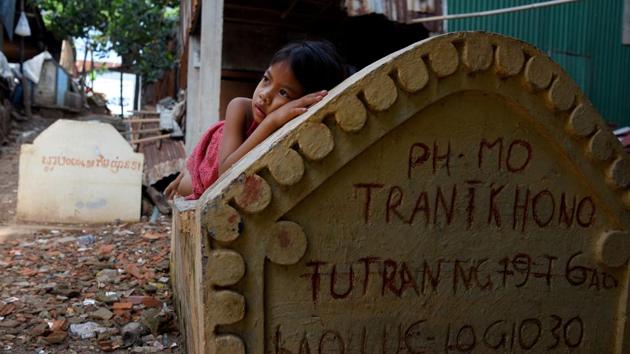
Updated on Jun 29, 2019 05:06 PM IST
A girl lying on a grave in Phnom Penh. Graveyards may traditionally be the eternal resting place for the dead, but one cemetery in Phnom Penh is increasingly becoming a place to stay for the living as land disputes plague the nation’s poor. (Tang Chhin Sothy / AFP)
2 / 10
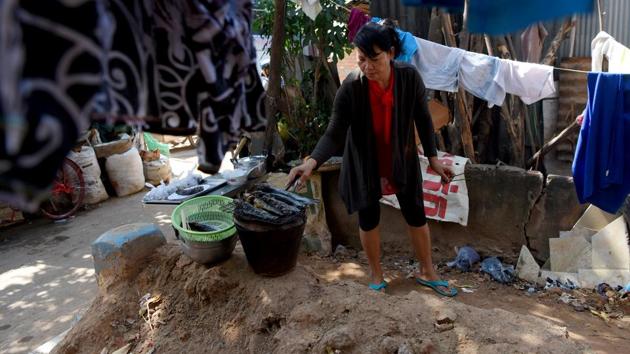
Updated on Jun 29, 2019 05:06 PM IST
Ma Nith confessed she was “speechless” when she realised that Smor San cemetery in the capital was to be home after her arranged marriage. “It was beyond my belief that I could live here,” said the 42-year-old mother of four, flipping fillets on the grill as her son clambered over a grave. “But now, I’ve adapted to it,” she told AFP, revealing that she had lived in the graveyard for 16 years. (Tang Chhin Sothy / AFP)
3 / 10
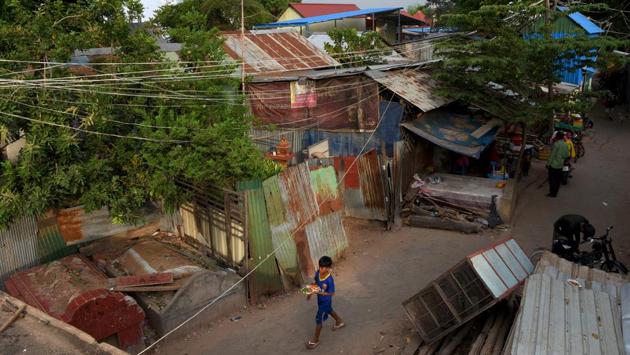
Updated on Jun 29, 2019 05:06 PM IST
A boy walks past graves in Phnom Penh. Ma Nith’s family is one of roughly 130 residing in make-shift stilt houses and corrugated metal huts in between the colourful tombs of Smor San. Many residents erected their homes in the 1990s but there has been a steady increase since then. (Tang Chhin Sothy / AFP)
4 / 10

Updated on Jun 29, 2019 05:06 PM IST
A woman sitting on the steps of her home next to a grave. Some came from a community whose riverside homes collapsed into the Bassac river, while others were evicted from nearby land to make way for a new market. They say the cemetery is the best option for them. Views across the river on Diamond Island show a vision of upmarket living with names such as Elite Town. (Tang Chhin Sothy / AFP)
5 / 10
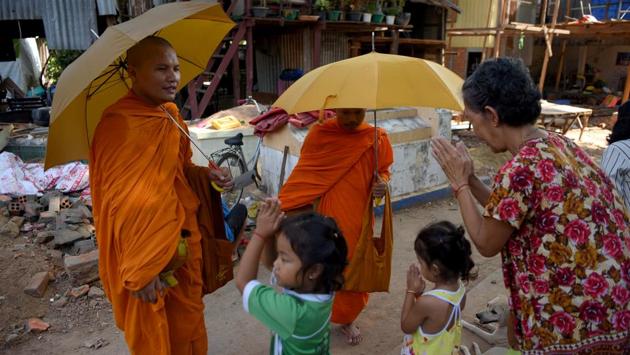
Updated on Jun 29, 2019 05:06 PM IST
A woman and children greet monks as they stand in front of graves. Buddhist-majority Cambodia typically cremate their dead but the cemetery’s long-term occupants are mostly ethnic Vietnamese, who believe in burials. While the dead may not care, their relatives do, and the growing community has even prompted some to start unearthing their loved ones and interning them elsewhere. (Tang Chhin Sothy / AFP)
6 / 10
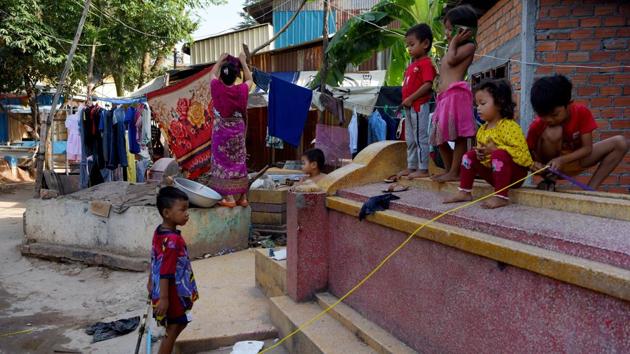
Updated on Jun 29, 2019 05:06 PM IST
Children play on a grave as a woman dries her clothes on another. “They say it’s messy because a lot of people live here,” said Peanh Moeun seated on a wooden bed by a gravestone while children rooted around strewn garbage scavenging for resellable scrap metal. “They would unearth their ancestors to bury them in another place,” the 63-year-old added. (Tang Chhin Sothy / AFP)
7 / 10
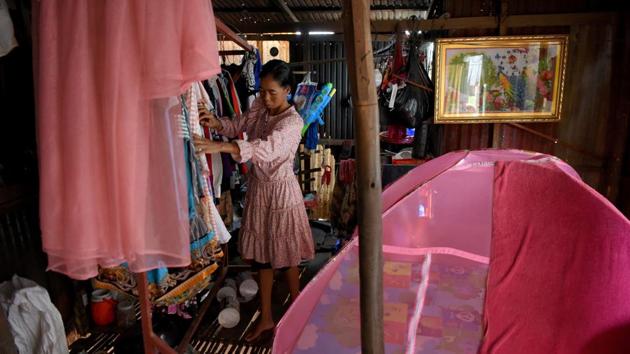
Updated on Jun 29, 2019 05:06 PM IST
A woman arranges clothes inside her home in front of a grave. When Peanh Moeun first moved in 19 years ago after having to leave a relative’s house, there were more than 300 graves. Today, there are about 110 remaining, she said. With 500 active residents, there are more living than dead. (Tang Chhin Sothy / AFP)
8 / 10
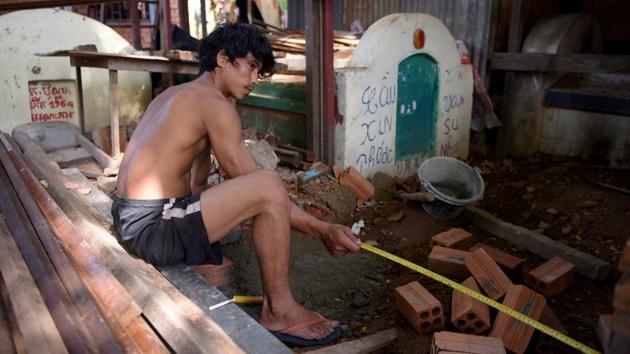
Updated on Jun 29, 2019 05:06 PM IST
A man prepares the foundation to build a house above graves. Nearby, Am Sokha looked on as a neighbour laid the foundations for a new house next to several graves. He admitted to sometimes eating the food left as offerings to the dead. (Tang Chhin Sothy / AFP)
9 / 10
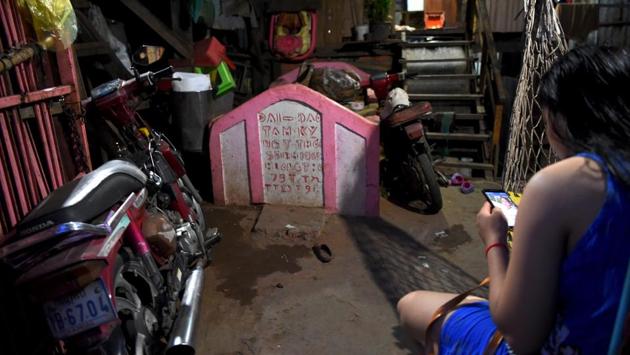
Updated on Jun 29, 2019 05:06 PM IST
A woman looks at her smartphone beside a grave inside her home. “We are chasing the ghosts away,” said the 62-year-old, who used to be homeless but now wishes to stay in Smor San “for life”. “Living here is safe, close to markets, and we have electricity and water,” he said. (Tang Chhin Sothy / AFP)
10 / 10
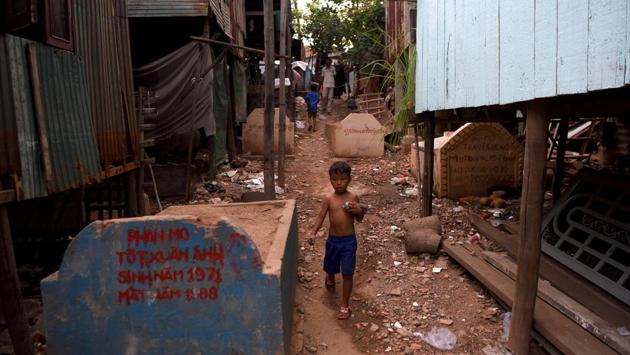
Updated on Jun 29, 2019 05:06 PM IST



